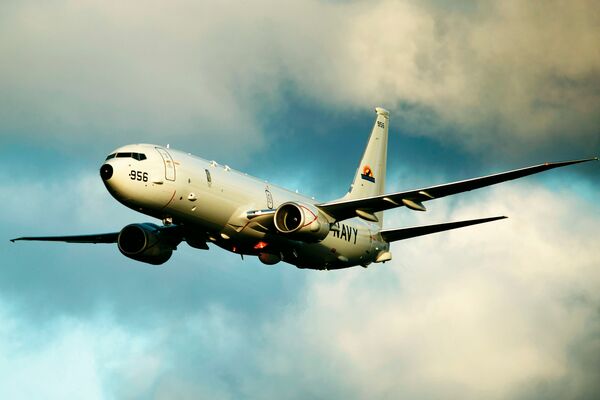
Boeing P-8A (P-8) Poseidon. The BAE Advanced Survivability Pod can be mounted under the aircraft's wing. (US Navy)
The US Navy (USN) has issued BAE Systems a USD95 million engineering, manufacturing, and development (EMD) contract to design and test the Advanced Survivability Pod (ASP), a radio frequency (RF) countermeasure pod that can be mounted on the Boeing P-8 Poseidon anti-submarine aircraft, the company said in a 5 June announcement.
The ASP contains an AN/ALE-55 Fibre-Optic Towed Decoy (FOTD) – the same as found on USN F/A-18s – and an unnamed RF countermeasure system mounted within the pod.
“The system's flexible, open architecture design allows rapid and affordable modernisation, is compatible with future threat-detection and decoy countermeasure capabilities, and can host third-party EW [electronic warfare] techniques,” BAE Systems said in the announcement.
The EMD contract follows a 2020 USN contract to prototype the ASP, which itself followed a requirement from the USN's Maritime Patrol and Reconnaissance Aircraft Program Office (PMA-290) to improve the P-8A platform's self protection against RF-guided surface-to-air missile (SAM) threats. BAE and the USN developed a prototype ASP just over a year after contract award, and in 2021 mounted it on a P-8 for airworthiness testing, then sent it to Naval Air Weapons Station China Lake for effectiveness tests.
The tests appear to have been a success. In March the USN signed a follow-on contract to finish integration with the P-8 and initial fielding of operational ASPs, the service told Janes on 10 June. BAE declined to disclose the number of pods built or on order.
The first EMD pre-production pods are scheduled for integration with USN P-8s in 2026, with initial operational capability (IOC) planned for late 2027.
Looking to read the full article?
Gain unlimited access to Janes news and more...







